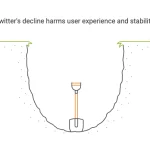December was quite the month. Before the month even fully kicked off, we were treated to what was the worst television spot of the holiday season, if not the entire year. The culprit?
Luxury exercise brand Peloton, which towards the end of November released a 30-second video ad titled “The Gift That Gives Back.” In it, a woman is led down the stairs of a high-end condominium by her daughter, eyes closed.
Waiting for her there is a Peloton exercise bike. The next segment is a montage that is very nearly postmodern in its absurdity.Over the course of a year, the woman films herself using the bike. Presumably, a year passes.
We then see that she has compiled her video exercise log. It’s a gift for her husband. The ad urges viewers to “give the gift of Peloton.” Then, it closes.
You can watch it here. The video is still live, though the company has long since disabled comments. As far as we can tell, it still doesn’t want to acknowledge that the ad was a flop.
It’s clear to everyone else that it did fail, though. Spectacularly. As reported by The New York Times, Peloton’s stock even fell nine percent after the ad aired.
There are several lessons we can glean from that failure.
Understand Your Audience
From the moment the ad first went live, one thing was abundantly clear: Although Peloton makes incredibly high-quality exercise products, they’ve only a middling understanding of their audience. One user’s commentary on Twitter best sums this up.
“I am one of those weirdos who got a Peleton for Christmas from my husband and I love it,” writes Joanna Schroeder. “I hate this ad so much it hurts…I’m the target demo and I agree with you that this is the beginning of a Black Mirror Episode.”
If the ad doesn’t resonate with the kind of people it aims to portray, then who exactly is its target audience?
Whether you’re paying out for a television spot or planning a social campaign, you need to understand your target demographic. Not just their age and income bracket, but who they are as people. In the case of the ad, Peloton clearly didn’t.

When You Make A Mistake, Own Up To It
Everyone fumbles every now and then. We’ve all been responsible for an ill-conceived advertisement or social post. And those of us who haven’t probably will be eventually.
In such a scenario, the best thing to do would be to apologize, take the criticism of your audience to heart, and endeavor to do better next time. This is not the route Peloton chose. Instead, the company dug in its heels, insisting that the problem was not with their marketing team, but with the audience.
“We constantly hear from our members how their lives have been meaningfully and positively impacted after purchasing or being gifted a Peloton Bike or Tread, often in ways that surprise them,” explained a company spokesperson in an email to CNBC. “Our holiday spot was created to celebrate that fitness and wellness journey.
While we’re disappointed in how some have misinterpreted this commercial, we are encouraged by — and grateful for — the outpouring of support we’ve received from those who understand what we were trying to communicate.”
As noted by Inc Magazine, this is about as passive-aggressive as an apology could possibly be. It’s not really even an apology.Unsurprisingly, critics have lambasted Peloton for this tone-deaf approach as much as for its ad.
Learn To Recognize Unexpected Opportunities
The real winner of the Peloton ad controversy is indisputably Ryan Reynolds. While the actor and actress from the Peloton commercial were busy dealing with the blowback, Reynolds had a brilliant idea. He hired the actress to star in a spot for his brand, Aviation Gin.
The ad (which can be viewed here) is a simple Twitter video with the tagline “Exercise bike not included.” It’s a short spot which implies the marriage of the Peloton woman didn’t last beyond her husband’s ill-advised Christmas gift. It’s entertaining, it’s tongue-in-cheek, and it was the perfect way to leverage the ongoing controversy around Peloton’s missteps.
The lesson here is simple. Learn to recognize opportunity however and wherever it presents itself. It may surface in the most unusual places, like a blunder committed by a brand in a completely different vertical from your own.
Conclusion
There were a lot of things Peloton could have done differently. They likely won’t learn from their mistakes unless someone gives them a more compelling reason than a small drop in stock price to do so. But that doesn’t mean you can’t learn something from their missteps.




